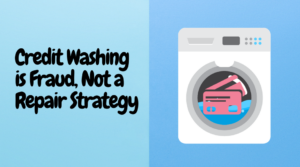Let’s look at the benefits and drawbacks of revolving credit and how it can impact your credit history.
What is revolving credit
Revolving credit is a type of credit that allows borrowers to borrow up to a certain credit limit and repay the debt over time with interest. Unlike a traditional loan, where the borrower receives a lump sum of money upfront and repays the debt in installments over a fixed period, revolving credit allows borrowers to borrow and repay funds on an ongoing basis.
What are examples of revolving credit
Credit cards are the most common form of revolving credit. With credit cards, the borrower can use the card to make purchases up to a certain credit limit. Each month, the borrower receives a statement indicating the balance owed, and they can choose to pay the balance in full or make a minimum payment and carry the remaining balance forward to the next billing cycle. The interest rate on the outstanding balance is charged based on the card’s terms and conditions.
Lines of credit are a type of revolving credit. A personal line of credit works similarly to a credit card but is not associated with a physical card. With a line of credit, the borrower can access funds up to a certain limit and can borrow and repay the funds as needed.
Home equity lines of credit. A home equity line of credit (HELOC) is a type of revolving credit that allows you to borrow against the equity in your home. You are approved for a specific credit limit, and you can borrow and repay funds as needed. The interest rate on a HELOC is typically variable and based on the prime rate.
Retail credit accounts. Some retailers offer revolving retail credit accounts that allow you to make purchases at their store and repay the balance over time, with interest. These accounts often offer special financing options or rewards for using them.
Personal lines of credit. Some banks and credit unions offer personal lines of credit, which work similar to credit cards or home equity lines of credit. You are approved for a specific credit limit, and you can borrow and repay funds as needed, with interest.
Benefits of revolving credit
Flexibility. Revolving credit offers flexibility, allowing borrowers to borrow and repay funds as needed.
Establishing a positive credit history. Responsible use of revolving credit, such as making on-time payments and keeping balances low, can help establish a positive credit history and demonstrate to lenders that you can manage credit responsibly.
Improve credit utilization. Revolving credit can help improve your credit utilization ratio, which is the amount of credit you are using compared to your credit limit. A lower credit utilization ratio can positively impact your credit score.
Building credit diversity. Having a mix of credit accounts, including revolving credit accounts, can help diversify your credit portfolio and demonstrate to lenders that you can manage different types of credit.
Accessing credit when needed. Revolving credit can provide access to credit when you need it, such as for unexpected expenses or emergencies.
Problems with revolving credit
While there are potential benefits to having revolving credit in your credit reports, there are also some potential problems to consider, for example:
High interest rates. Revolving credit, such as credit cards, can come with high interest rates, especially if you carry a balance from month to month. This can lead to significant interest charges and debt if you don’t pay off your balances in full each month.
Debt accumulation. Revolving credit can make it easy to accumulate debt. If you carry a balance from month to month or take on more credit than you can afford to repay, it can lead to a cycle of debt and financial stress.
Negative impact on credit scores. Making late payments or maxing out your credit limits, it can negatively impact your credit scores. This can make it harder to qualify for other credit products and lead to higher interest rates and fees.
Temptation to overspend. Revolving credit can make it tempting to overspend, especially if you have high credit limits or are offered credit limit increases. Overspending can lead to debt and financial stress, and can also negatively impact your credit scores.
How revolving credit impacts credit scores
Revolving accounts can have a significant impact on your FICO credit score, which is widely used by lenders.
Payment history
Your payment history is the most crucial factor, accounting for 35% of your score. Late payments on revolving accounts like credit cards can severely damage your score, while consistently making payments on time can strengthen it.
Amounts Owed
The amounts you owe also play a significant role, representing 30% of your score. Relying too heavily on your available credit can signal to lenders that you may struggle to keep up with expenses, so it’s best to avoid maxing out your credit lines. A utilization ratio below 10% is ideal for maintaining a good score.
Conclusion
It is important to use revolving credit responsibly and make payments on time to avoid high-interest charges and negative impacts on credit scores.


















